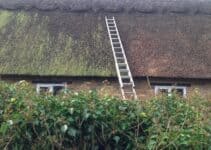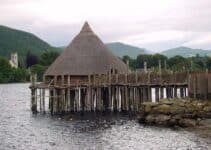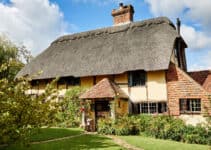If you’ve ever looked closely at a thatched roof, you might have noticed small animals on the very top. This leads us to the question, why do thatched roofs have animals on top? The animals on top of thatched roofs are essentially finials, which is a decorative element. You’ll find finials on all kinds of roofs but also on curtain poles and on the coving around rooms.
Thatched roofs are the only place where you’ll find decorative animals made of straw, though. In this article, we’ll look in more detail at what these finials are and why they’re shaped like animals.
What are Straw Animals on Thatched Roofs?
As mentioned, the straw animals are finials – decorative objects. Historically, though, they did have an actual purpose. Originally, they were used to deter birds from landing on the roof.
Anyone who’s owned a thatched property will know that birds love using thatch for their nests, which can lead to issues with the roof’s integrity.
But these straw animals were also used to ward off evil spirits. Just as with gargoyles and other decorative elements, straw animals were believed to protect a home against evil.
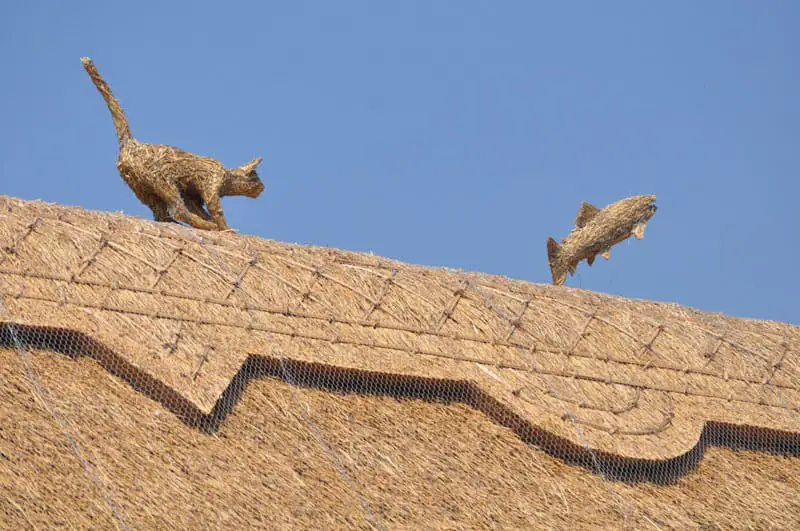
While we might not believe this is the case anymore, it certainly can’t do any harm to keep them around!
Finally, a common reason for adding straw animals to thatched roofs was as a maker’s mark. For example, one thatcher might be known for their crosses, while another specialises in birds.
Just as stone masons and other artisans would mark their work, so would thatchers. The most logical way for them to do so was to add a straw animal on top.
These thatched roof ornaments are particularly common in the West Country, although you’ll also find them all over the UK. Due to their history, the most common animals are:
· Birds, especially owls, ducks and pigeons
· Foxes
· Cats
Nowadays, you’ll also find more exotic animals like elephants and dogs. In fact, there’s theoretically no limit to the kinds of animals you’ll see adorning a thatched roof. Although thatchers still use the same basic materials, the addition of modern wires and armatures mean it’s possible to get more complex and interesting shapes.
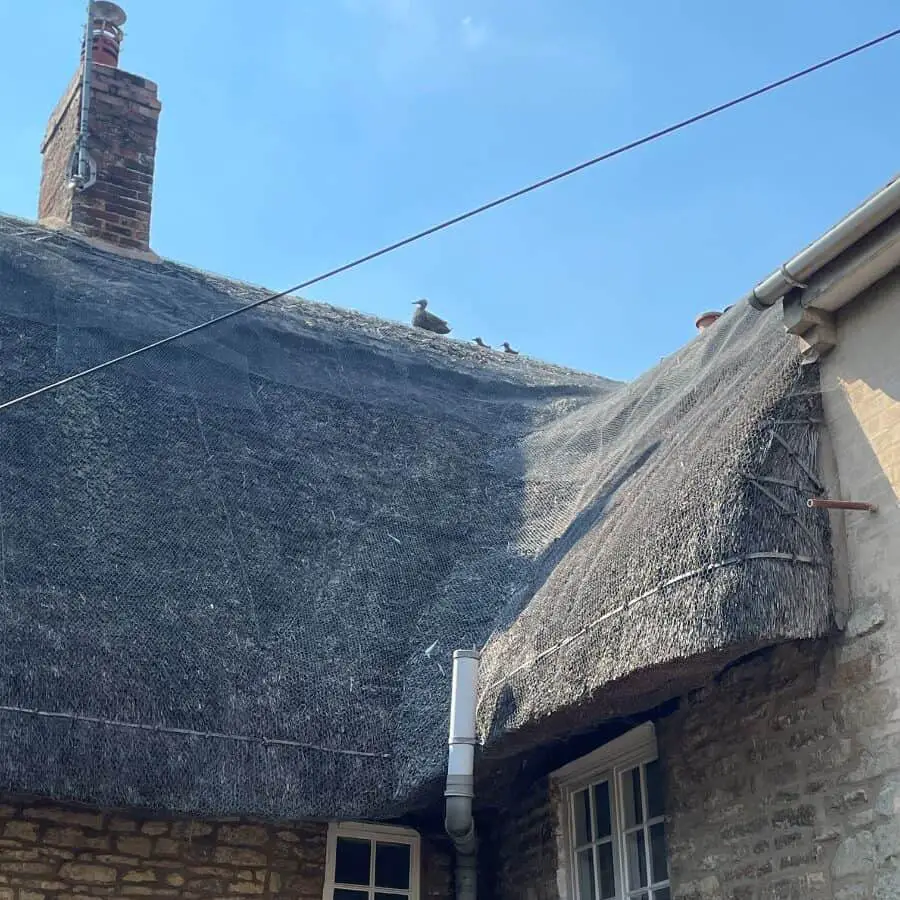
Straw Finials
Straw finials don’t really serve any practical purpose, but they look great. They’re made by weaving straw around a basic shape, often made of wire or sticks.
Another option (for less complex shapes) is to bunch the straw together and then tie it. This is the method used for things like birds. The art of making straw finials is fairly complex and is often a secondary speciality of master thatchers.
The first mention of straw finials dates back to the late 17th century, when a traveller noticed straw crosses on thatched properties in Ireland. However, they quickly became very complex, and now we can find everything from aeroplanes and dragons to foxes and birds sitting on top of a thatched roof.
Straw finials don’t last anywhere near as long as the rest of the roof. Unlike the thatch, they’re more exposed to the weather.
As such, a straw animal will only last a few years if you’re lucky. They can be made of twisted wheat straw covered in wire netting. After a few years, the wheat decomposes and just leaves behind the wire.
Luckily, they can be replaced without affecting the rest of the thatched roof.
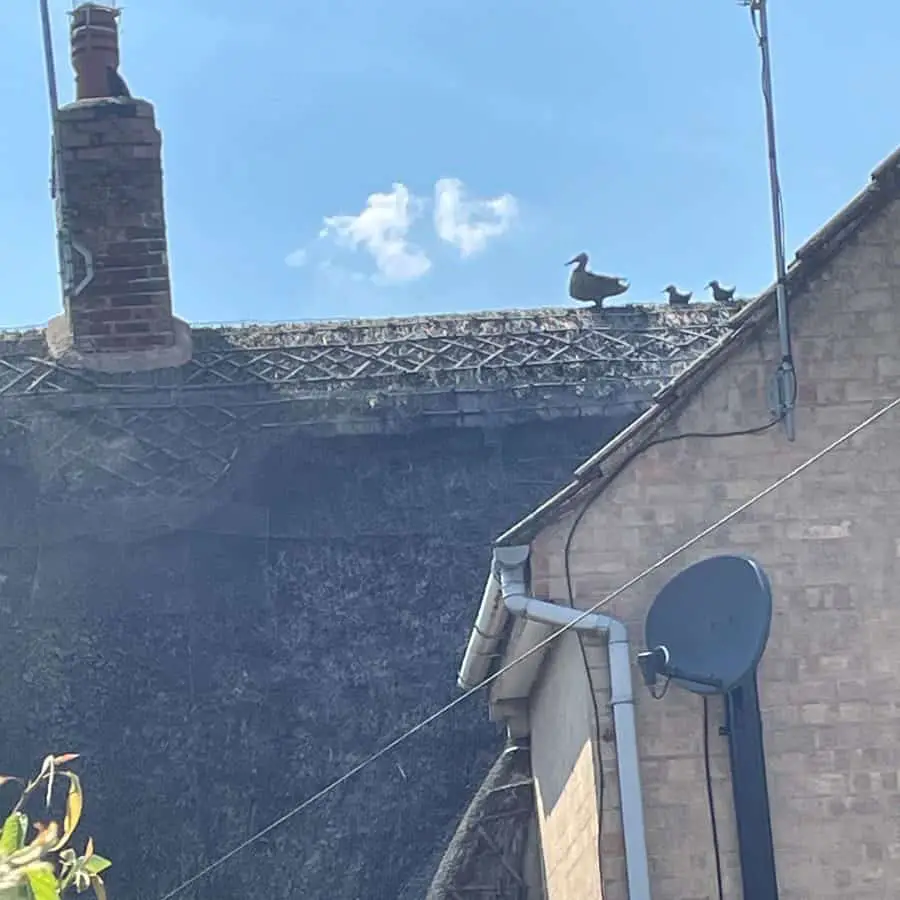
What is a Thatcher’s Dolly?
A thatcher’s dolly is a long thin bundle of material used to build the ridge of the thatched roof. It’s intended to add thickness before the cap is put on, so it has extra springing.
This helps keep everything in place and to elevate the cap over the rest of the thatch, which is needed to help water run off properly.
The term thatcher’s dolly can also be used to refer to the straw animals described above. It’s debatable which meaning the term is more appropriate for, as the latter is a dolly in the sense of a corn dolly.
The former, on the other hand, is a reference to a specific and separate part of the thatched roof.
It’s fair to assume that the two terms share the same history, as they focus on the same areas of the roof. Straw finials would sit on top of the dolly, so they were probably added at the same time during the thatching process.
Final Thoughts
Straw animals (or finials) are a great feature that points to the long and interesting history of thatched roofs. Initially a religious or folk symbol, they now serve as a sign of the skill of the thatcher.
So, next time you drive past a thatched roof with animals on top, you’ll know what they mean. And you never know, you might even be able to start identifying thatchers using them!
